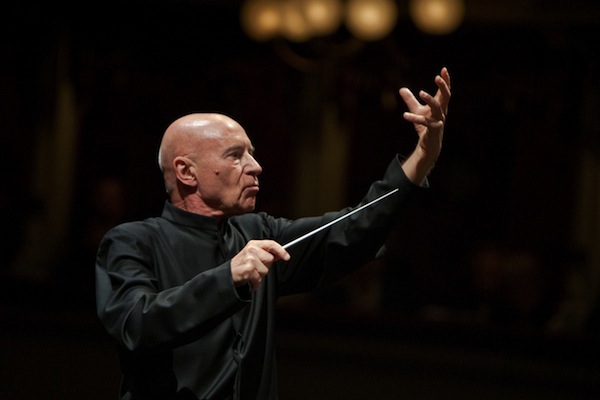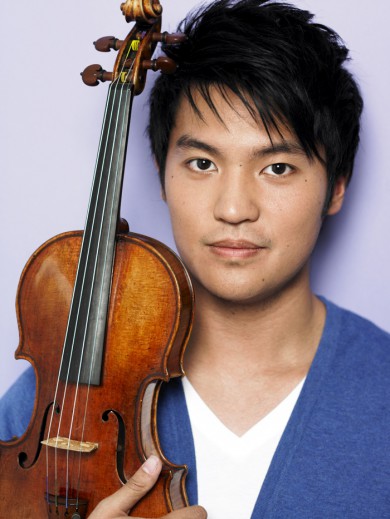Eshenbach, Bamberg Symphony make an impressive Miami debut

Christoph Eschenbach conducted the Bamberg Symphony Saturday night at the Arsht Center. File photo: DiLuca Piva
The German city of Bamberg has a population no bigger than that of Deerfield Beach. Yet Bamberg boasts a first-class, big-city symphony orchestra, acquired through an accident of postwar population shifts that the city has embraced.
The orchestra, which performed Saturday at the Arsht Center in Miami, grew from the German Philharmonic of Prague, whose members were expelled in 1946 by the Czech government. Ending up in the historic Bavarian city of Bamberg, they joined with local musicians to form an orchestra that now sells 6,000 subscriptions a year in this city of 70,000 and boasts a tour schedule that would impress the New York Philharmonic.
Led by honorary conductor Christoph Eschenbach, outgoing music director of the National Symphony Orchestra, the orchestra played works of Mozart, Bruch and Beethoven. Despite the slender population base of its home city, this is a full-size orchestra, with a full, well-blended string tone and strong wind and brass sections. The orchestra performs again Sunday night at the Kravis Center in West Palm Beach.
Joining the orchestra for Bruch’s Violin Concerto No. 1 was the young violinist Ray Chen, an extremely gifted virtuoso who has appeared several times in South Florida.
Chen performed the concerto on a 300-year-old Stradivarius once owned by the great 19th-century violinist Joseph Joachim, who provided technical advice to Bruch in the composition of this concerto and performed its world premiere in 1868.
Chen was at his best in the concerto’s fiery, dramatic passages. He drew maximum force from the thundering chords of the opening. His big tone was gritty and powerful in melodies that took him high up the instrument’s lowest string. In rapid passages, he hit hard on significant notes, giving these sections extra bite. He gave a thrilling performance of the climactic arpeggios that come toward the end of the movement, holding back at first and then surging forward in volume and intensity, deploying a huge tone in the rapid notes that easily stood up to the orchestra.
Less successful was the Adagio, where Chen overwhelmed Bruch’s innocent melodies with a heavy, throbbing vibrato. That sort of tone worked in the first movement, where the intensity level was higher but was out of place here and gave a monochrome tone to his performance. He was back in his element in the rollicking chords of the last movement, where his aggressive style made the most of the exuberant runs and big melodies.
It takes nothing away from his performance to note that this piece is overplayed. Bruch wrote two other worthy violin concertos that contain much of the same drama, pathos and feeling for the capabilities of the violin as this one, yet they’re almost never performed.
As an encore, Chen gave his virtuosity free rein in a performance of Paganini’s Caprice No. 21. Although musically barren, it’s an incomparable show-offy piece, featuring a difficult technique called up-bow staccato, which Chen tossed off at hair-raising speed with astonishing crispness and accuracy.
The concert opened with Mozart’s Overture to Don Giovanni, with an ending composed for concert performances by Ferruccio Busoni. Like the opera itself, the overture is a brew of the spooky, the comic and the tragic, and the orchestra brought out all these elements effectively, although there was some scrappy playing in the violins.
Eschenbach led a monumental performance of Beethoven’s Symphony No. 3, known as the “Eroica,” taking unhurried tempos, reveling in moments of high drama and emphasizing the rich, complex inner and lower voices. He made the most of the ominous quiet passages in the first movement, where Beethoven appears to be gathering power, and then discharged the tension in thunderous climaxes that were all dark power without ever becoming raucous. Throughout his approach was emphatic and pointed, with timpani thumping louder than in typical performances and close attention to the abrupt silences and gruff attacks that mark the movement.
In the opening of the Funeral March, he emphasized the accompaniment in lower strings, with their sepulchral descending lines that seem to be leading to the abyss. The Allegro Vivace came as the resurgence of energy it was intended to be, with strings playing with great lightness and clarity, and horns delivering a performance in the trio that was full of resonance, robustness and character.
In the concluding movement, Eschenbach led a performance that showed both great attention to detail and a sense of increasing momentum, as the movement builds through variations on the opening theme. His attention to the inner voices was such that he often appeared to give accompaniments more attention than the main themes, visibly urging more force from the second violins in the emphatic chords that accompanied one minor-key melody.
As an encore, the orchestra gave a compact, boisterous performance of Beethoven’s Overture to The Creatures of Prometheus.
The Bamberg Symphony Orchestra and violinist Ray Chen perform 8 p.m. Sunday at the Kravis Center in West Palm Beach, playing Mozart’s Don Giovanni Overture, Mendelssohn’s Violin Concerto and Mahler’s Symphony No. 5. kravis.org; 800-572-8471.
Posted in Performances
Leave a Comment
Sun Feb 12, 2017
at 2:17 pm
No Comments





